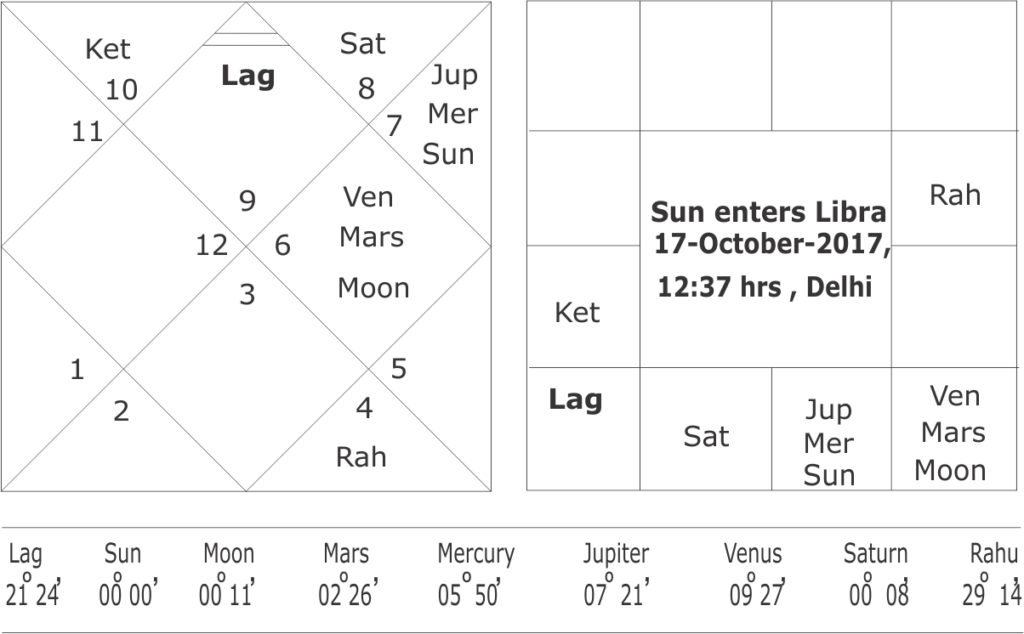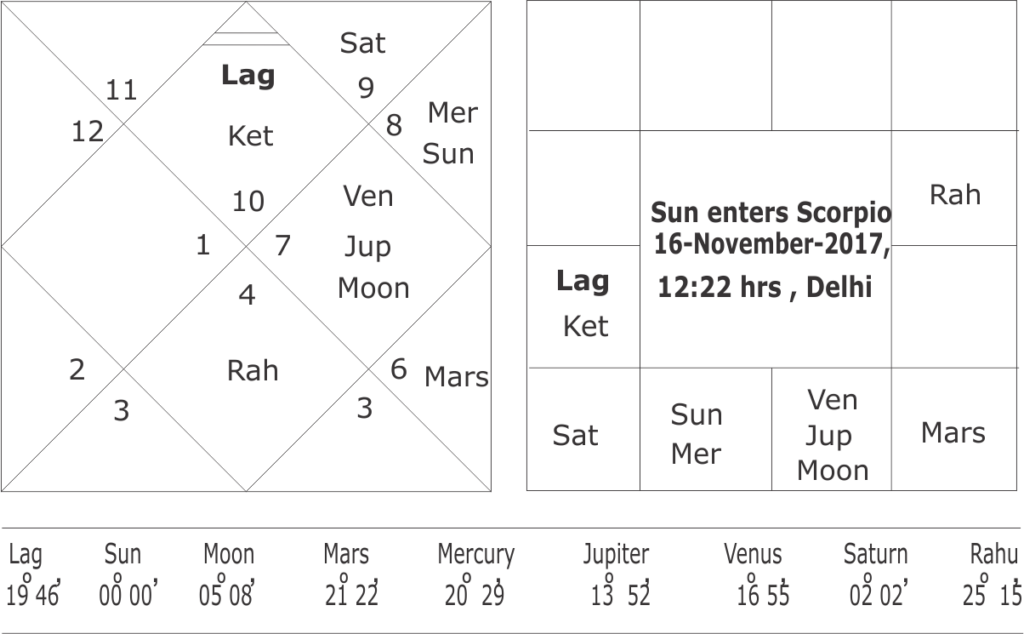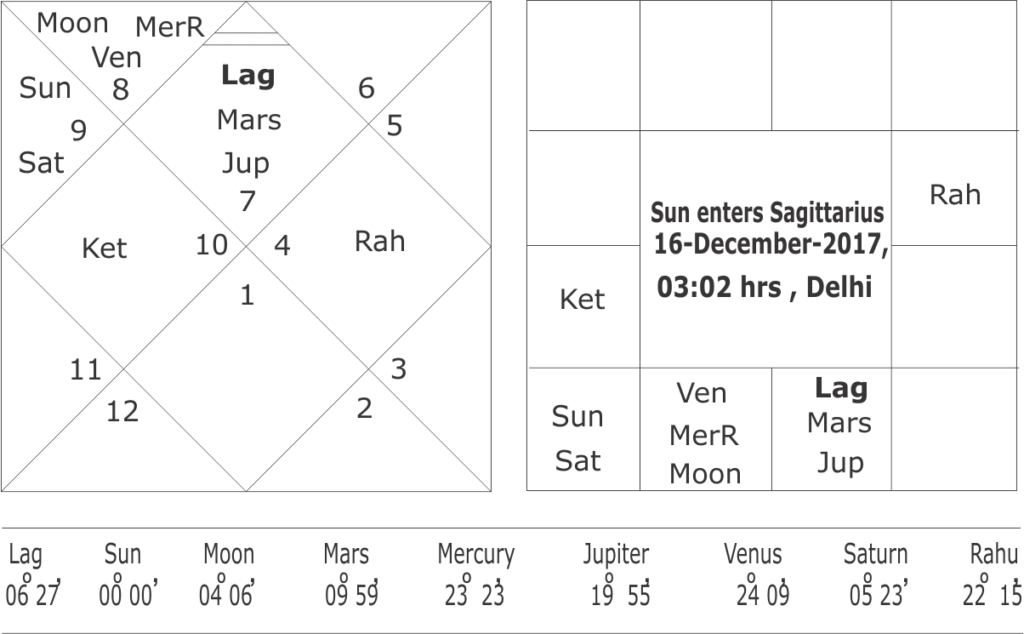The south-west monsoon season ( June-September) 2017 has ended with a normal but erratic rainfall. As per the Indian Meteorological Department (IMD) the country received 841.3 millimeters (mm) of rain as against the long period average of 887. 5 mm which is just 5% short. If the rainfall is within 10% range of its long period average than the IMD consider it to be normal for the season. However, these number do not tell the full details as the patch distribution of rainfall has inflicted damage for the crops. As per a report published in the Hindu News Paper the monsoon in 2017 was quite whimsical.
I had forecast an erratic monsoon in my article “planets and trends of south-west monsoon in 2017”. This article was published in the June issue of Express Start Teller magazine.
This years monsoon had been particularly very erratic for the key food-bowl states like Punjab, Haryana, Madhya Pradesh and Uttar Pradesh. While access rain in Gujarat ( 29% excess) and Rajasthan ( 8% excess) was surprising for both meteorologist and astrologers. A good rainfall in Gujarat is good for cotton and groundnut production. While deficient rain in Madhya Pradesh ( 20% deficient) and Haryana ( 26% below normal) is bad for wheat crops. Monsoon was 29% below normal in Uttar Pradesh and 22% short of normal for Punjab which is going to hamper the Kharif crops ( winter crops) this year.
Now the planetary indicators are showing that the north-east monsoon, which is crucial for southern peninsula, may fall short than the normal for year 2017. During 2015 the Tamil Nadu had received 53% excess rain with disastrous flood in Chennai which shocked the met department. Last year the north east monsoon season, from 1 October to 31st of December, was the driest in the last 150 years. Now this year with Saturn’s entry into Sagittarius it may remain just below normal as the solar ingress charts given below are suggesting.
Tula Samkranti
17 October 2017, 12:37 hours at Delhi

At the time of solar ingress of Libra the Moon, Venus and Mars would be in Virgo. The sign Virgo signifies the areas of southern-peninsula as per the korma Chakra. The position of these three planets in the south direction is a good indication for a timely onset of north-east monsoon. The coastal areas of Andhra and Tamil Nadu will start getting rainfall from the middle of October this year. The conjunction of watery planets Mercury and Jupiter in the airy sign Libra is showing the possibility of strong wind in the coastal areas during the second fortnight of October.
Later in the first week of November the Mercury will move into watery sign Scorpio on the 1st of November and Venus will move into Libra on the 2nd of November. These two watery planets changing sign will bring more rain in the coastal district of southern states.
Vrischik Samkranti
16 November 2017, 12:22 hours at Delhi

At the time of solar ingress of Scorpio the Saturn will be in fiery rashi Sagittarius and in fiery navamsha Aries which is not good for rainfall. The aspect of Mars on Saturn will give less rainfall during the second half November 2017. The interior district of southern-states particularly in Tamil Nadu will get less than normal rainfall. The Venus-Jupiter conjunction in Libra will give strong winds and rain in the coast areas though.
Later the Venus-Sun conjunction in the sign Scorpio and Mars entering into Libra will give good rainfall during the first week of December in the interior of Tamil Nadu and also in its capital Chennai.
Dhanu Samkranti
16 December 2017, 03: 02 hours at Delhi

In the last fortnight of December the close conjunction of Sun-Saturn and the Mars-Jupiter will give less rainfall during the north-east monsoon season. The Sun-Saturn in the fiery rashi Sagittarius gives more than normal temperature. The Jupiter-Mars conjunction is also a combination of producing higher temperature and less rains as per the astro-meteorological texts. So in year 2017 may give less than normal rainfall during the north-east monsoon season.
